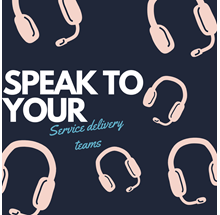.ashx?mw=320)
How to prioritise welfare and respect when creating charity case studies
When it comes to selling a product or promoting a service, showing beats telling every single time.
People are much more likely to trust the positive things people say about you than the positive things you say about yourself. That’s why case study videos are such a vital tool in every marketer’s kit.
They’re particularly valuable to the charity marketer. A strong, emotive case study can raise awareness about an important cause, encourage people to ask for help and inspire donations – basically the charity trifecta.
But when you’re dealing with service users rather than customers, it’s not as simple as picking a person and pointing a camera at them. Of course, your objective is the charity trifecta, but your number one priority at all times has to be the wellbeing of the individual.
We have worked with the charity sector for many years now and from our experience some top tips when gathering charity case studies are:
1) Speak to your service delivery teams to find appropriate case studies
When it comes to charity case studies, a list of names and email addresses simply won’t do. You’re not asking people to talk about how effectively a special mop cleaned their floors; you’re asking them to talk about the most painful moments of their past or present life.
Work with your front line colleagues to identify appropriate service users who were supported recently enough to still be time-relevant, but who are also sufficiently distant from the difficult period of their life to have regained some stability.
2) Listen out for red flags when you’re speaking to them
Even if your service delivery team believe a person is at an appropriate stage in their journey, it’s possible that circumstances have changed since they were last in contact. Start your conversation with the service user by asking how they are, and read between the lines of what they’re saying throughout your conversation – if you have any suspicion that they may still be struggling, alert your service delivery team straight away.
3) Explain the process in full - but don’t make it sound scarier than it is
Make sure the person knows exactly what’s involved and where their story will be shared, but explain the process in simple terms so they don’t feel overwhelmed. I always described it as a three-step process:
• An informal chat on the phone to learn more about their story
• A visit from me and our friendly cameraman, where we’ll chat on camera
• Some photos taken by a professional photographer, which they can keep
4) Make them as comfortable as possible
Where possible, it’s a good idea for you or someone else from your charity to be present at shoots. We’re a friendly bunch over at Capital Content and we’re great at making people feel comfortable on set, but you’re the person they know from the charity and your presence can help to put them at ease.
When it comes to speaking on camera, they’re likely to be feeling very self-conscious. Remedy this by replicating a genuine conversation as much as possible when you interview them; maintain eye contact while they talk, and smile and nod your head to show you’re listening (but don’t make any noise – the mic will pick it up!).
5) Prioritise their wellbeing and comfort at all times
As a marketer, you know exactly the kind of stories that will help you achieve your aims, but sometimes it’s just not in the best interest of the individual. If at any stage you become aware of circumstances in their life that make them particularly vulnerable, or if you sense that they are uncomfortable with being filmed beyond normal nerves, prioritise their wellbeing and stop the process. Service users are always very grateful for support offered and are keen to ‘give back’ to the charity, but it’s your responsibility to make sure they are not agreeing to take part out of a sense of obligation, at the expense of their own wellbeing.
6) Keep in contact
I think it’s important to remain in contact with your case studies after the camera stops rolling. On a logistical level, it’s important to check in at regular intervals to make sure they’re still happy for their video to be shared. But, more importantly, the person has opened up to you and shared some of their private thoughts, feelings and experiences – don’t just disappear once you’ve got what you need.
When handled respectfully, case studies are a fantastic way to tell the stories of your service users and bring the work of your charity to light.
For more guidance on how to approach your case studies, or to discuss different creative ways to tell their stories, chat to Capital Content.







